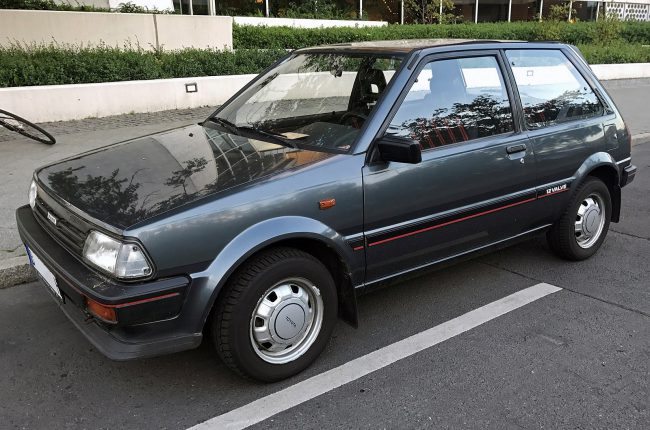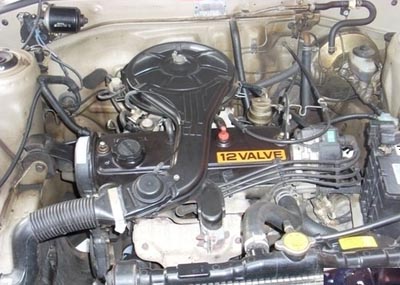
Toyota 1E engine
In the early eighties of the last century, Toyota Motors management decided to introduce a new series of engines under the general designation E. The units were intended for small and small cars from the corporation's production range.
The task was to develop a budget motor with maximum efficiency, albeit to the detriment of power characteristics, which does not require large expenditures in operation and maintenance. The first sign, released in 1984, was the Toyota 1E ICE, which was installed on the Toyota Starlet.

The motor was an in-line overhead valve four-cylinder engine with a working volume of 999 cm3. The displacement limit was adopted for the sake of tax incentives. The cylinder block was made of cast iron, with pressed-in liners. The block head material is aluminum alloy. A scheme with 3 valves per cylinder was used, for a total of 12 valves. There were no phase shifters and hydraulic valve clearance compensators; periodic adjustment of the valve mechanism was required. The timing drive was carried out by a toothed belt. To facilitate the motor, a hollow crankshaft was installed. The power system is a carburetor.

The compression ratio was 9,0:1, which made it possible to use A-92 gasoline. Power reached 55 hp. The power reduced to a liter of working volume approximately corresponded to the VAZ 2103 engine, which began to be produced eleven years earlier. Therefore, the 1E motor cannot be called forced.
But the 1E engine was distinguished by good efficiency, and on a light Starlet it nursed up to 300 thousand km without any problems. From this point of view, the task set by the leadership of Toyota Motors could be considered completed.
Advantages and disadvantages of the 1E engine
The main advantage of this internal combustion engine is low fuel consumption. Toyota Starlet with such an engine fit into 7,3 liters. gasoline in the urban cycle, which at that time was considered a good indicator even for small cars.
The disadvantages include:
- lower resource than series A;
- frequent misfires due to malfunctions in the ignition system;
- difficult to set up carburetor;
- even with a slight overheating, it breaks the cylinder head gasket.
In addition, there were cases of occurrence of piston rings with a run of 100 thousand km.
Engine Specifications 1E
The table shows some parameters of this motor:
| Number and arrangement of cylinders | 4, in a row |
| Working volume, cm³ | 999 |
| Supply system | carburetor |
| Maximum power, hp | 55 |
| Maximum torque, Nm | 75 |
| Block head | aluminum |
| Cylinder diameter, mm | 70,5 |
| The piston stroke, mm | 64 |
| Compression ratio | 9,0:1 |
| Gas distribution mechanism | SOHC |
| number of valves | 12 |
| Hydraulic compensators | no |
| Timing drive | belt |
| Phase regulators | no |
| Turbocharging | no |
| Recommended oil | 5W-30 |
| Oil volume, l. | 3,2 |
| fuel type | AI-92 |
| Environmental class | EURO 0 |
In general, despite some shortcomings, the engine was popular. Buyers were not stopped by the official "disposability" of the motor, which more than paid off with low operating costs and the availability of contract engines. Yes, and it is not difficult for craftsmen to overhaul the power plant, the simple design contributes to this.

